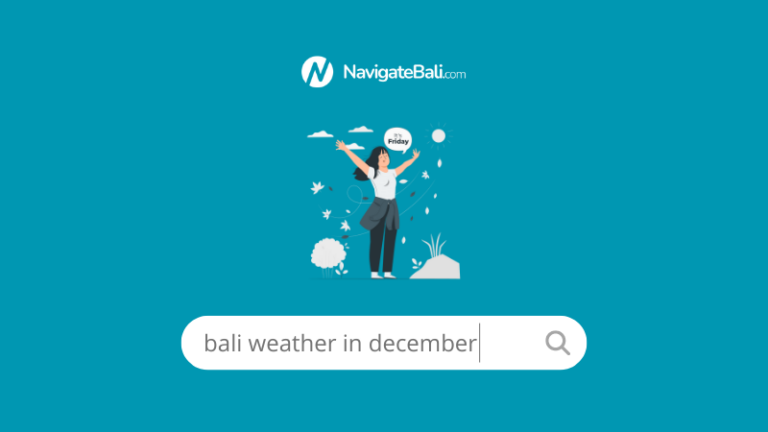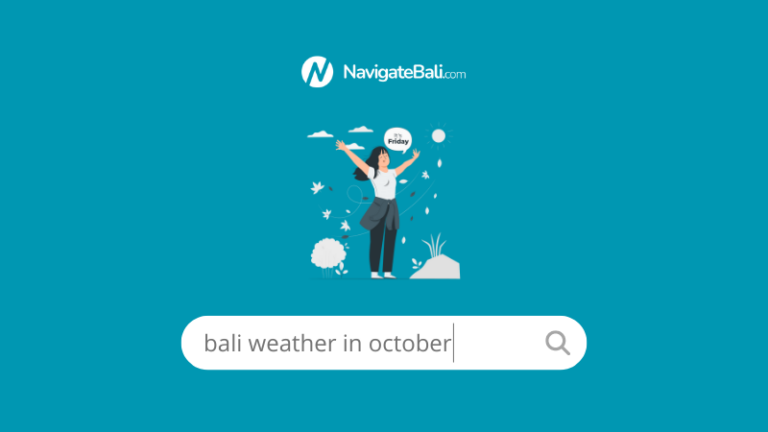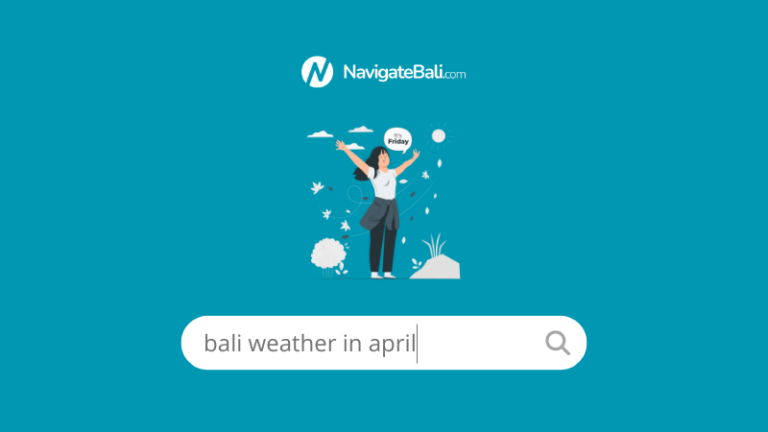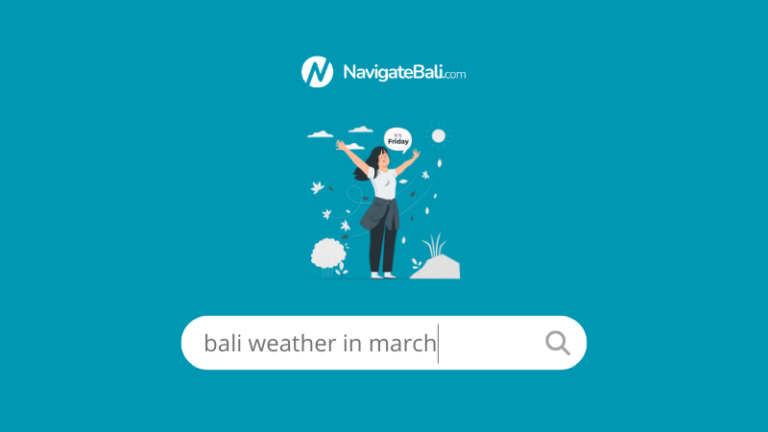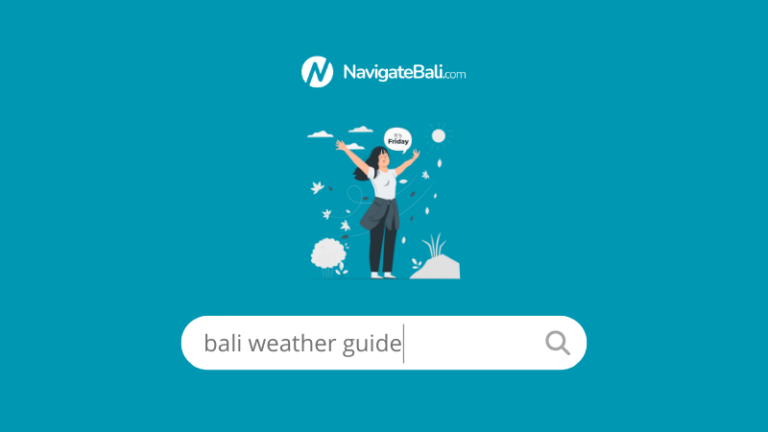Bali Weather in January: Warm, Wet, Less Crowded
Bali’s January weather offers a unique tropical experience for visitors. You can expect warm temperatures and high humidity throughout the month. Daytime highs typically reach around 30°C (86°F), while nighttime lows hover around 23°C (73°F).
January falls within Bali’s wet season, bringing frequent rainfall to the island. Showers are often short but intense, providing brief respite from the heat. Despite the rain, you’ll still enjoy plenty of sunshine, with an average of 5-6 hours of clear skies daily.
The warm ocean temperatures make January an excellent time for water activities in Bali. Swimming, surfing, and snorkeling are popular pursuits during this period. Remember to pack lightweight, breathable clothing and rain gear to stay comfortable during your visit.
Table of Contents
Climate Overview for Bali in January
January in Bali brings warm temperatures and increased rainfall as part of the wet season. You’ll experience high humidity and warmer sea conditions during this tropical month.
Average Temperatures and Rainfall
In January, Bali’s daytime temperatures typically range from 26°C to 30°C (79°F to 86°F). Nighttime temperatures remain warm, rarely dropping below 23°C (73°F).
Rainfall is abundant, with an average of 300-400mm throughout the month. You can expect rain on 15-20 days in January.
Despite the wet season, you’ll still enjoy around 5-6 hours of sunshine daily. Rain showers are often intense but short-lived, allowing for outdoor activities between downpours.
Humidity and Sea Conditions
Humidity levels in January are high, often reaching 80-85%. This can make the air feel sticky and warm, especially during midday hours.
Sea temperatures are pleasant, averaging around 28°C (82°F). These warm waters are ideal for swimming and water activities.
Ocean conditions can be rougher due to increased winds and storms. Some beaches may have stronger currents and larger waves, so exercise caution when swimming.
You’ll find the landscape lush and green from the frequent rainfall, creating beautiful scenery across the island.
Travel Tips for Bali in January
Visiting Bali in January requires preparation for wet weather, awareness of cultural events, and smart planning for accommodations. Pack wisely, embrace local traditions, and find budget-friendly options to make the most of your trip.
What to Pack for the Weather
Pack light, breathable clothing suitable for warm temperatures. Bring a lightweight rain jacket or umbrella for sudden showers. Include a wide-brimmed hat for sun protection during clear periods. Don’t forget swimwear and water-resistant sandals.
Insect repellent is essential to ward off mosquitoes. Pack sunscreen and after-sun lotion to protect your skin. A reusable water bottle will help you stay hydrated in the humid climate.
Consider bringing a few long-sleeved shirts and pants for cooler evenings or temple visits. Quick-dry fabrics are ideal for the wet season.
Festivals and Cultural Events
January offers unique cultural experiences in Bali. The Denpasar Festival showcases local art, music, and cuisine. Check the dates and plan your visit accordingly.
Attend a traditional Balinese dance performance to immerse yourself in the island’s rich culture. Many hotels and cultural centers offer nightly shows.
Visit temples during Hindu ceremonies for a glimpse into Balinese spiritual life. Remember to dress modestly and follow local customs when attending religious events.
Accommodation and Cost Considerations
January is part of the low season, offering better deals on accommodations. Book in advance to secure the best prices, especially for luxury resorts.
Consider staying in Ubud for a cultural experience or Seminyak for beach access and nightlife. Hostels and guesthouses provide affordable options for budget travelers.
Look for package deals that include airport transfers and daily breakfast to save money. Some resorts offer spa treatments or activities as part of their low-season promotions.
Be prepared for slightly higher prices during the New Year’s period. Booking early can help you avoid inflated costs during this peak time.
Popular Activities and Attractions
Bali offers a diverse range of experiences for visitors in January. From pristine beaches to ancient temples, there’s something for everyone to enjoy during this time of year.
Outdoor and Water Activities
You can make the most of Bali’s warm January weather with various beach and water activities. Surfing is excellent at spots like Uluwatu and Padang Padang. Snorkeling and diving are popular in Amed and Nusa Penida, where you’ll encounter vibrant coral reefs and diverse marine life.
For a more relaxed experience, sunbathe on the golden sands of Seminyak or Nusa Dua. Many beaches offer sun loungers and umbrellas for rent. Water sports like jet skiing and parasailing are available at busier beaches.
Hiking enthusiasts can explore lush landscapes and cascading waterfalls. The Sekumpul Waterfall in North Bali is particularly stunning in January after the wet season rains.
Cultural and Historical Sites
Bali’s rich culture and history are on full display at its numerous temples. You can visit the clifftop Uluwatu Temple for breathtaking ocean views and traditional Kecak fire dances at sunset.
Besakih Temple, known as the “Mother Temple,” is Bali’s largest and holiest Hindu sanctuary. It’s an impressive complex of 23 related temples on the slopes of Mount Agung.
For a unique photo opportunity, head to Tanah Lot Temple. This iconic sea temple is particularly picturesque during January’s clear days.
The famous Tegalalang Rice Terraces offer a glimpse into Bali’s agricultural heritage. You can walk through the terraces and learn about traditional Balinese farming methods.
Dining and Local Cuisine
Balinese cuisine is a highlight of any visit to the island. You’ll find an array of local dishes to try, from succulent babi guling (suckling pig) to flavorful nasi goreng (fried rice).
Warungs, small family-owned restaurants, offer authentic and affordable Balinese meals. For a more upscale experience, Seminyak and Ubud boast numerous fine dining establishments.
Don’t miss the opportunity to try local fruits like mangosteen and snake fruit, which are in season during January. Many restaurants also offer cooking classes where you can learn to prepare traditional Balinese dishes.
Jimbaran Bay is famous for its beachfront seafood dinners. You can enjoy fresh grilled fish and shellfish with your toes in the sand as you watch the sunset.
Navigating Bali in January
January offers unique opportunities and challenges for exploring Bali. You’ll encounter different transportation options and varying crowd levels across the island.
Transportation Options
Renting a scooter provides flexibility for navigating Bali’s roads. You can easily maneuver through traffic and access remote areas. However, be cautious of wet conditions during this rainy season.
Taxis are readily available in tourist areas. Use reputable companies like Bluebird for metered rides. Ridesharing apps like Grab also operate on the island.
For longer distances, consider hiring a private driver. This option allows you to relax and enjoy the scenery without worrying about navigation.
Public buses connect major towns but can be crowded and slow. They’re best for budget-conscious travelers with flexible schedules.
Managing Tourist Crowds
January sees fewer visitors compared to peak seasons. You’ll encounter shorter queues at popular attractions and find it easier to book accommodations.
Beach areas like Kuta and Seminyak remain busy. For a quieter experience, head to less-frequented spots such as Amed or Sidemen.
Popular temples like Tanah Lot may still draw crowds. Visit early in the morning or near closing time for a more peaceful atmosphere.
You’ll find reduced wait times at restaurants and spas. Take advantage of this to try popular establishments without long waits.
Explore Bali’s Weather Throughout the Year:
- Bali Weather in January: Warm, Rainy, Less Crowded (You are here)
- Bali Weather in February: Warm, Rainy, Less Crowded
- Bali Weather in March: Warm, Less Rainy, Transitional
- Bali Weather in April: Warm, Drier, Start of High Season
- Bali Weather in May: Sunny, Dry, Perfect for Exploration
- Bali Weather in June: Sunny, Dry, Perfect for Adventures
- Bali Weather in July: Warm, Sunny days, Minimal Rain
- Bali Weather in August: Sunny, Dry, Perfect for Exploring
- Bali Weather in September: Warm Days, Low Rainfall
- Bali Weather in October: Warm, Sunny, with Occasional Rain
- Bali Weather in November: Warm, Humid, with Increasing Rain
- Bali Weather in December: Warm, Rainy, Festive Atmosphere
For a comprehensive guide to Bali’s weather patterns and travel tips for every month, check out our Complete Bali Weather Guide.
Frequently Asked Questions
Bali’s January weather brings unique conditions and opportunities for travelers. Let’s explore some common queries about this time of year on the island.
January in Bali is characterized by warm temperatures and high humidity. You can expect a mix of sunny and rainy days. Brief showers often occur in the afternoon or evening.
Bali receives significant rainfall in January. You can anticipate around 90-100mm of rain spread across 15-20 rainy days. Showers are usually short-lived, allowing for plenty of dry periods.
January temperatures in Bali are consistently warm. Daytime highs typically reach 29-31°C (84-88°F). Nighttime lows hover around 23-25°C (73-77°F). The humidity makes it feel even warmer.
January offers various activities for visitors. You can explore indoor attractions like temples and art galleries. Water sports enthusiasts can enjoy surfing on the east coast. Spa treatments and cooking classes are perfect for rainy afternoons.
Beach activities are still possible in January. You can sunbathe during dry spells and swim when the water is calm. Some beaches may have stronger currents, so always check local conditions and heed warning flags.
January is part of Bali’s rainy season. You’ll experience more precipitation than in the dry months of April to September. However, January typically sees less rainfall than the peak wet months of December and February.

